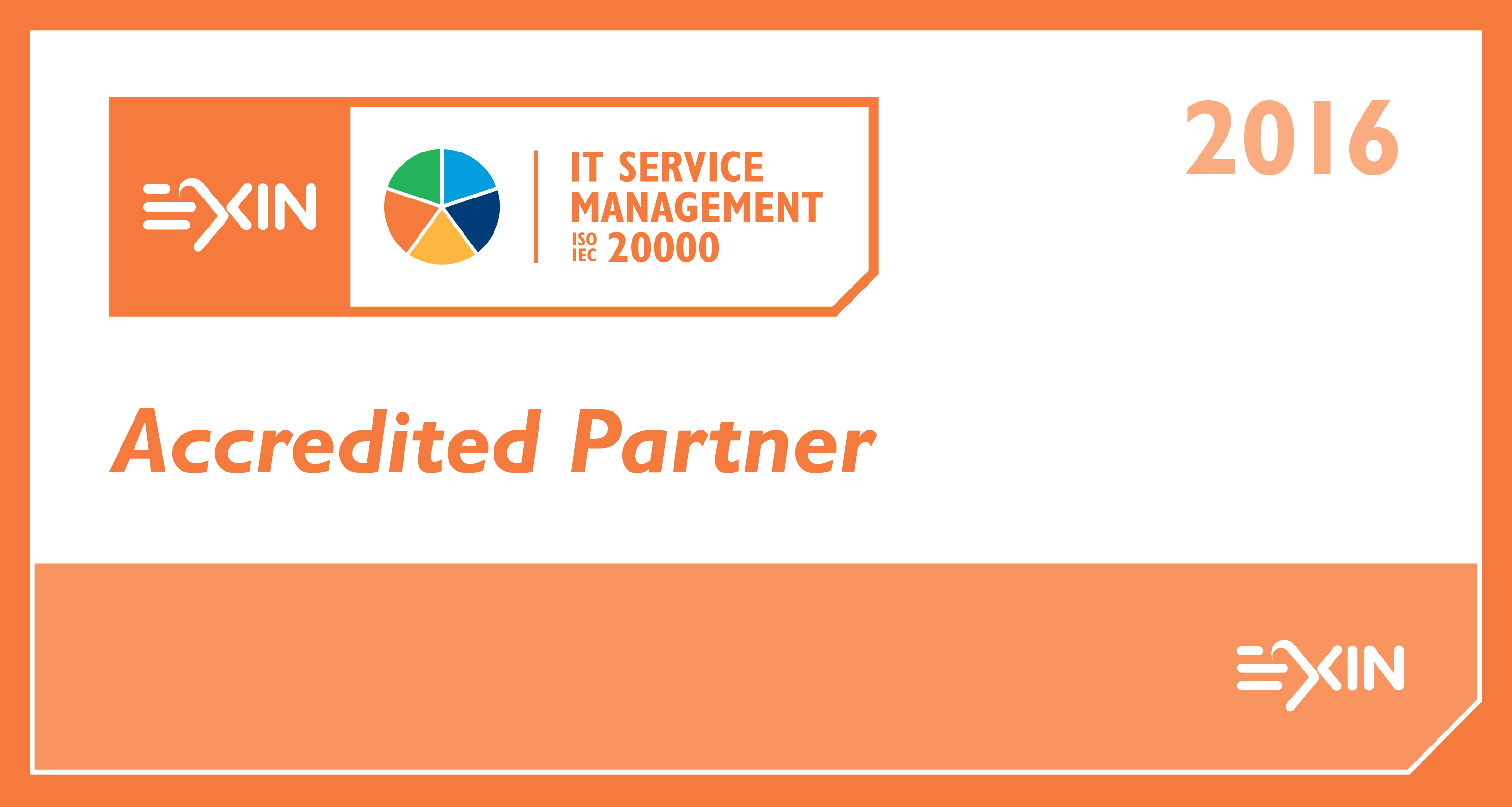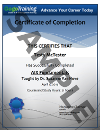This course specifically describes the practical activities and competencies of the Associate-level member of an IT organization. This skill set builds on the foundation knowledge, taking the high-level information gained in the Foundation course and providing additional depth and practical context so you can begin to apply this knowledge in your workplace. The Associate has a much more ‘global’ view of the standard as well as the daily activities required to maintain or achieve ISO/IEC 20000 implementation so you can manage your bigger picture more effectively.This course is strongly focused on the install, plan, do and check activities of Deming’s PDCA cycle and supporting the elements of audit and improvement (act) so you can put your plans into action. In order to qualify for the exam, you will need to purchase and have successfully completed three (3) Practical Assignments:Assignment in planning the provision of servicesAssignment in managing the provision of servicesAssignment in measuring, monitoring and reporting on the provision of servicesTo take this course for certification, you need to have completed the Practical Assignments to receive the Completion form, and taken ISO/IEC 20000: IT Service Management Foundation and have successfully passed either the ISO/IEC 20000 Foundation or the ITIL Foundation exam.The course teaches to the current standards: ISO/IEC 20000-1 and SO/IEC 20000-2:2012.
View all course details
Module 00: ISO/IEC 20000: IT Service Management Associate-Course Introduction
Module 01: The Service Management System General Requirement Part 1
- Plan, Do, Check, Act (PCDA) in Service Management
- Maturity
- Management Requirements
- Service Management Plan
Module 02: The Service Management System General Requirement Part 2
- Management Requirements
- Governance
- Documentation
- Resource Management
- Key Roles
Module 03: Establish and Improve is a Must!
- Deming Principles
- Scoping
- Certification Steps
Module 04: The Service Management Plan
- Project Based Approach
- RACI Model
- Roles and Responsibilities
- The Need to write Good Policies and Objectives
- The Little Role of Tools
Module 05: Deming’s Do
- Do what you planned
- Operate the Service Management System
Module 06: Check
- Check, check, check!
- Internal Audits
- Management Reviews
Module 07: Metrics and Reporting
- Why Measure?
- Proper Reporting
- Determining CSFs and KPIs
Module 08: Continual Improvement: Act on It
- Maintain and Improve
- Improvement Model
- Improvement Related to Quality
Module 09: Design and Transition of New or Changed Services
- All about Requirements
- Risk Management and Risk Assessment
- Service Removal
- Transition of New or Changed Services
- Needed Documentation and Records
- Needed Personnel Competencies
Module 10: All about Processes
- Why have processes?
- The Benefits of Process es
- Risk in Managing Processes
- Process Integration, a Must!
Module 11: Service Level Management (SLM)
- Managing Service Levels
- Documenting Service Levels
- Service Level Management Interactions
- Service Level Measurement
Module 12: Service Reporting
- Managing Service Reporting
- Types of Reports
- Process Maintenance
- Service Reporting Measurement
Module 13: Service Continuity and Availability
- Managing Continuity and Availability
- Business Impact Analysis (BIA)
- Policy
- Plans
- Service Continuity
- Documentation
- Measurement
Module 14: Money Matters: Budget and Accounting
- Policy Matters
- Cost Types
- Cost Model
- Documentation and Measurement
Module 15: Capacity Management
- Managing Capacity
- Capacity Plan
- Documents and Records
- Measurement (not again!)
Module 16: Information Security
- Managing Security, including the People
- Security Policy
- Control
- Measurements
Module 17: Business Relationship Management
- Relationship with Service Level Management
- Customer Satisfaction
- Records
- Measurements
Module 18: Supplier Management
- Contract Management
- Managing Sub-Contractors
- Document and Records
- Measurements
Module 19: Incident and Service Request Management
- Managing Incidents
- Managing Service Requests
- Major Incidents
- Document and Records
- Measurements
Module 20: Problem Management
- • Managing Problems
- • Root Cause Analysis
- • Pro-Active Problem Management
- • Document and Records
- • Measurements
Module 21: Configuration Management
- All About Configuration Items
- Key Concepts
- Document and Records
- Measurements
Module 22: Change Management (Not Management of Change)
- Key Concepts
- Policy
- Emergency Changes
- Documents and Records
- Measurements
Module 23: Release and Deployment
- Release and Deployment Management
- Release Policy
- Release Plan
- Testing
- Documents and Records
- Measurements
Module 24: Exam Tips
- Summary of Exam Topics
- Taking multiple choice exams
- Mandatory Practical assignment
View all course details
You should have taken ISO/IEC 20000: IT Service Management Foundation as a prequisite for this course. If you are sitting for the Associate exam, you will need to have:
- Passed the Practical Exercise Requirement
- Taken and passed either the IT Service Management Foundation based on ISO/IEC 20000 exam or ITSM Foundation Bridge based on ISO/IEC 20000 exam and an ITIL® Foundation exam. To prepare for the Foundation certificate, you will need to take ISO/IEC 20000: IT Service Management Foundation. Equivalent certificates include: ITSM Foundation Bridge based on ISO/IEC 20000 and an ITIL® Foundation.
View all course details



